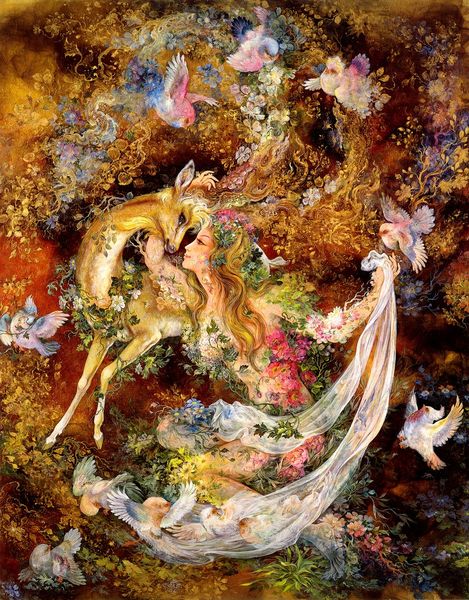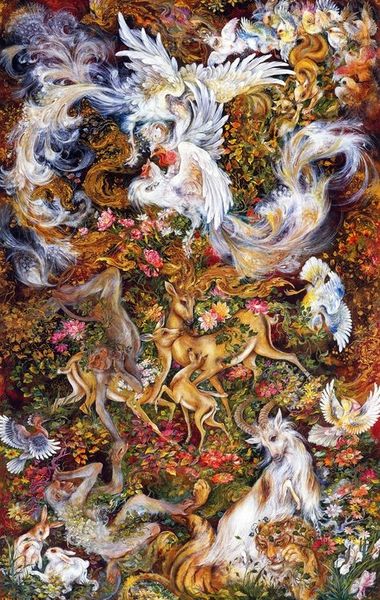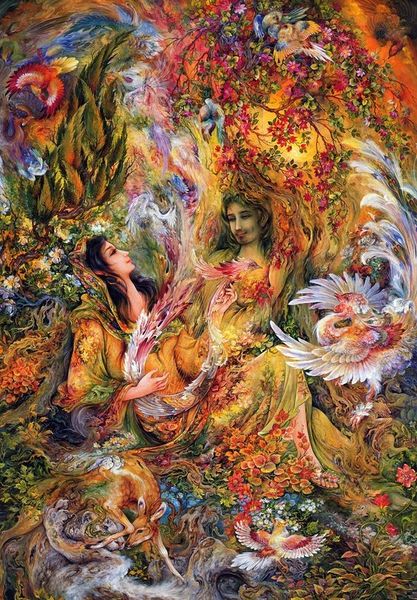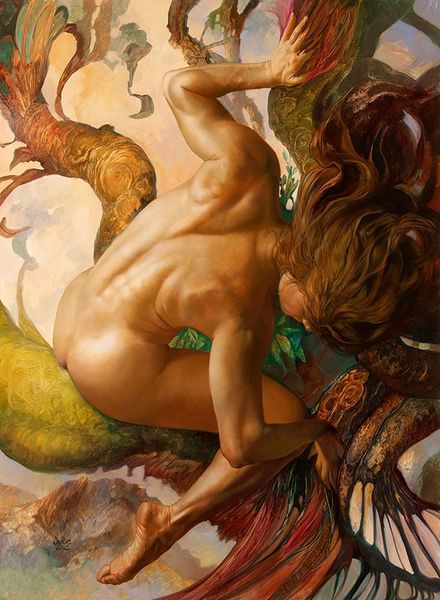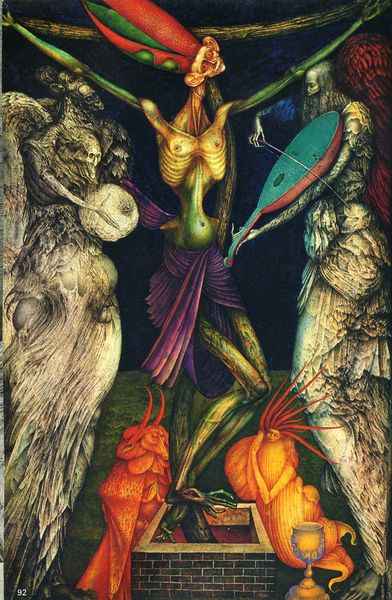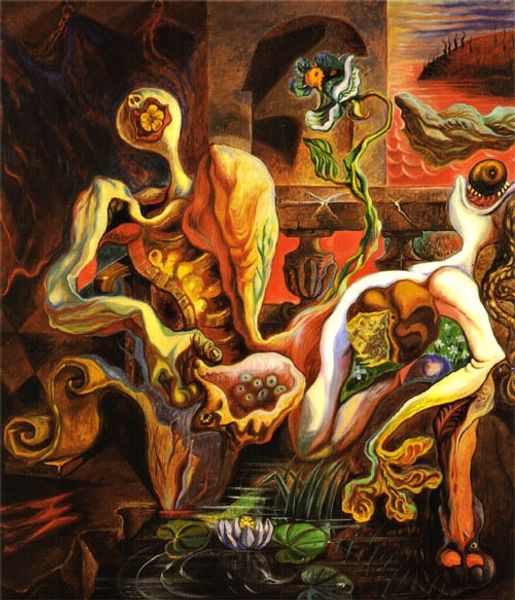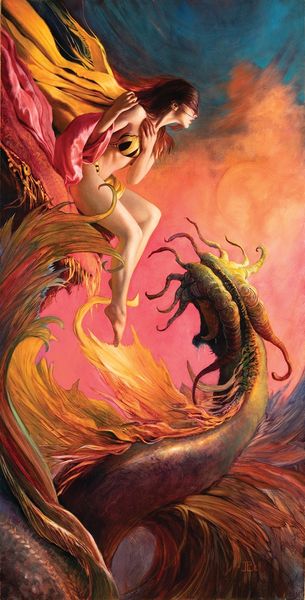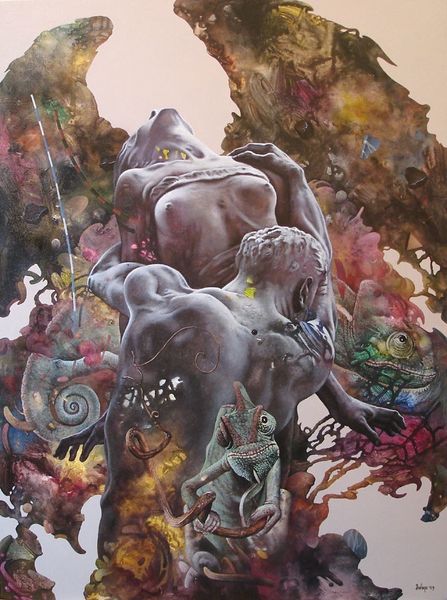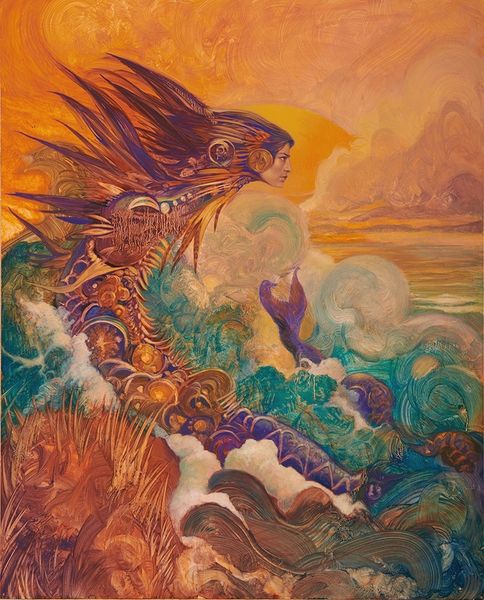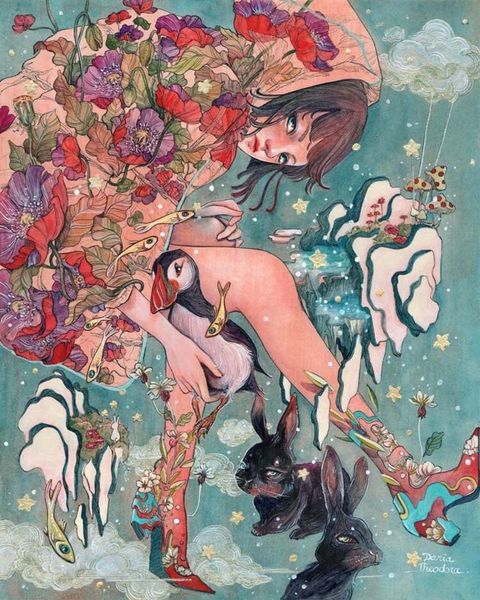
mixed-media, painting
#
mixed-media
#
narrative-art
#
painting
#
landscape
#
fantasy-art
#
figuration
#
orientalism
#
mythology
#
islamic-art
#
miniature
Copyright: Mahmoud Farshchian,Fair Use
Curator: This mixed-media piece, simply titled "Untitled", is the work of Mahmoud Farshchian. It showcases a scene reminiscent of classical Persian miniature painting. Editor: It feels like entering a dream, a swirling vortex of color and form. There’s almost a psychedelic intensity in how the flora and fauna blend together. What stands out to you from a material perspective? Curator: The density of detail certainly strikes me. We see familiar elements rendered in a fantastical manner. Note, for instance, the deer encircled by flowering vines intertwined with mythical birds—motifs steeped in rich symbolism across Persian art and literature. One is compelled to consider its possible historical, religious, or social implications. The intersection of those themes, to me, is very telling. Editor: I’m intrigued by the artist’s choice of mixed media; it appears to combine traditional painting techniques with possibly applied textures. It prompts one to question how these combined processes may impact both the viewing and creation of the painting. Did he use specific kinds of paper or cloth? What was the sourcing, and how might that change or alter meaning? Curator: I wonder how much this borrows from illuminated manuscripts, considering how crucial books and the art within them were for shaping cultural narratives. Are we meant to see this scene as a story, an allegory perhaps, about power, beauty, and the cycle of life, referencing tales that would’ve been circulated for generations? Editor: That layering of history makes one wonder, too, about the labour embedded in its creation. This level of detail would demand time and focused intention—a kind of slow, deliberate making that in itself can carry significance. It becomes a kind of resistance against today's modes of artistic production and circulation. Curator: It does invite resistance, doesn't it? A refusal of the contemporary by embracing tradition. Perhaps it's pushing back against Western art historical conventions, claiming space for a different kind of aesthetic language. The orientalist reading comes into view. It raises questions about who is doing the telling, for whom, and toward what end. Editor: Yes. Examining those means and context of making and then consuming reveals a very interesting narrative, doesn’t it? It leads me to think a lot about global commerce and markets for handmade fine art and the social narratives it might contain or project. Curator: Absolutely. The piece leaves us pondering the relationship between tradition and modernity. It underscores that art isn't made within a vacuum. Everything about this particular piece compels us to situate this creation within that socio-political fabric.
Comments
No comments
Be the first to comment and join the conversation on the ultimate creative platform.

